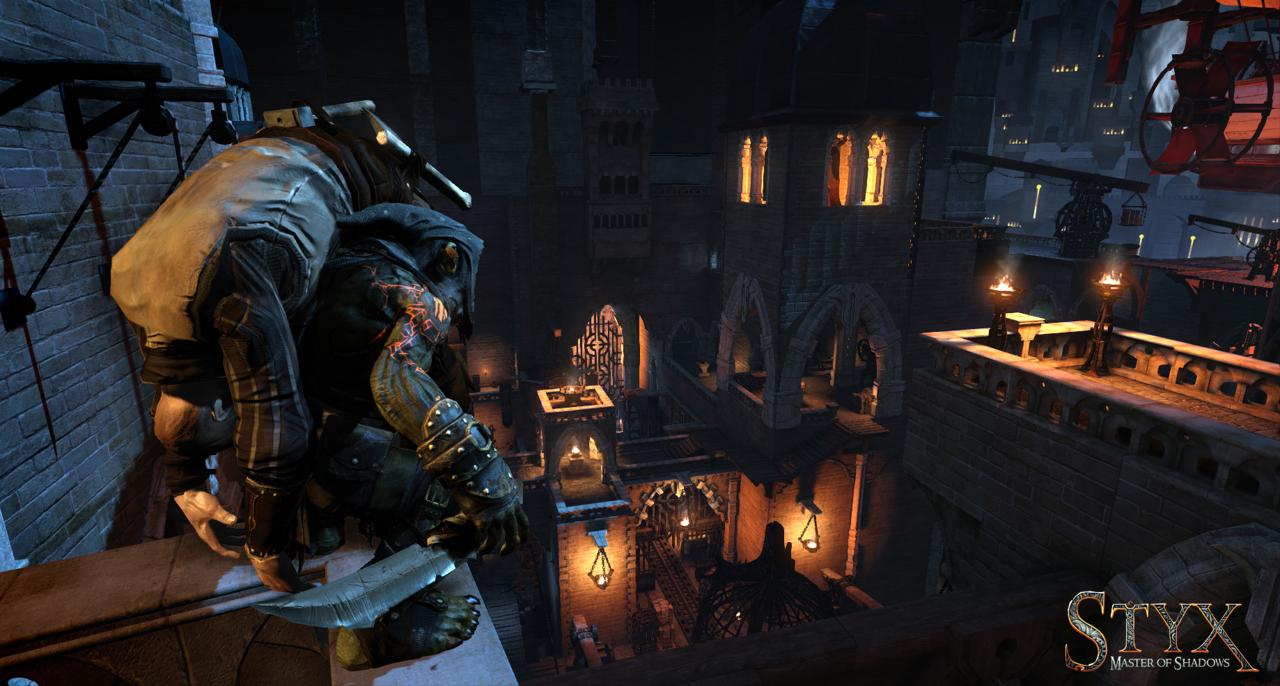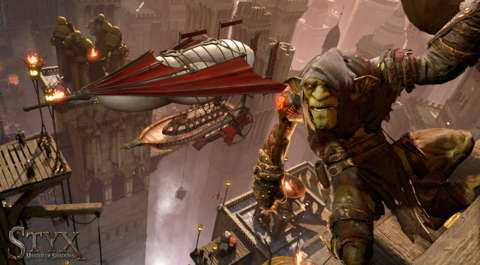E3 2014: How Thief and Dishonored Inspired Styx: Master of Shadows
The goblin who cloned me.
Fallout 4 Next Gen Update Comparison Stellar Blade - Hard Mode No Damage Gigas Boss Gameplay Stellar Blade - Hard Mode No Damage Abaddon Boss Gameplay Stellar Blade - (Almost) All Outfits Granblue Fantasy: Relink - New Content Trailer Modern Warfare III - New Season 3 Reloaded Modern Warfare Zombies Update River City Girls 2 - New Playable Characters DLC Reveal!! That Time I Got Reincarnated as a Slime ISEKAI Chronicles – Official Announcement Trailer MEGATON MUSASHI W: WIRED – Official OP “MUSASHI English Ver.” Trailer Gothic 1 Remake | Official Collector's Edition Trailer SaGa Emerald Beyond – Official Launch Trailer Paper Mario: The Thousand-Year Door – Official Switch Overview Trailer
Please enter your date of birth to view this video
By clicking 'enter', you agree to GameSpot's
Terms of Use and Privacy Policy
What happens when a small, stealthy goblin vomits out a clone of himself, which runs under a giant crate, attracting the attention of guards, while the original goblin cuts the hanging cable to crush the guards--and clone--beneath? You get one of the coolest interactions that I saw in my half-hour demo of Styx: Master of Shadows. Cyanide's take on the stealth genre is about using the environment against the AI in creative ways, and in that regard, the developer points to games like Thief: The Dark Project, Dark Messiah of Might and Magic, and Dishonored as key inspirations.
Every level in Master of Shadows is impressively large, with imposingly tall towers instilling an oppressive, totalitarian vibe about the world. This size allows for a focus on exploiting verticality to gain the upper hand--just like in the scenario described above. The eponymous Styx may be small in stature, but he is incredibly nimble and surprisingly resourceful. Small drainpipes, pots, and nooks serve as hiding places, while his climbing abilities allow him to quickly scale the environment and explore one of each level's many alternate approaches.

It's Styx's ability to disgustingly clone himself that allows you to toy with the enemies like few other stealth games. Control can be switched between the clone and Styx on the fly, allowing you to distract, lure, and confuse guards. The clone can be made to explode into a cloud of smoke or consumed by Styx to recover some of his amber--the game's equivalent of mana.
It's Styx's ability to disgustingly clone himself that allows you to toy with the enemies like few other stealth games.
Styx is infused with the magical substance, and a tattoo on his arm glows to indicate when he is hidden in shadow. Sound also plays a role, with enemies able to hear your footsteps, and some blind monsters are more sensitive to aural disturbances. Other enemies can actually smell you, too, requiring you to keep distance from them and find ways to remove them through exploiting the environment. From torches to snuff out, water to spit in and poison (which guards may choose to drink), and precarious ledges to kick enemies off, Cyanide is filling Master of Shadows' levels with interactive elements that you can transform into deadly opportunities.

Much like in Dishonored, a skill tree allows you to unlock new magical abilities that layer even more opportunities upon those already offered by the level design. You can choose the ability to hear your heart beating when you're about to get spotted, allowing you a small window of advance warning that you should find some shadow. Amber vision allows you to see enemies through walls--but, unlike in Dishonored, this is a high-level ability that is very difficult to unlock. With what Cyanide estimates to be a 15-hour single-player story, and the ability to replay levels to ghost through them or attempt speedruns, Styx could be one of the most competent stealth games since Dishonored itself. Did I mention you can vomit up goblin clones?
See more coverage of E3 2014 →
Got a news tip or want to contact us directly? Email news@gamespot.com
Join the conversation